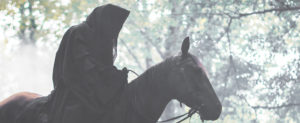The Importance of Linen in the American Civil War Era
Are you interested in American Civil War re-enactment? Are you wondering where to begin, as far as getting an authentic costume for the occasion? Well, if so, you should first learn a bit about the importance of linen during the American Civil War. During the American Civil War, linen fabric was used for clothing for both genders of all ages.
Women of that time wore linen chemises, sometimes known as frocks. A chemise was a bit like a modern day nightgown, except that, during those times, women wore chemises under other clothing all day. Women did wear linen chemises by themselves as nightgowns sometimes. Linen chemises were worn under a woman’s corset, for warmth and comfort. The softest linen available would be used to make these as they were always close to the skin. The best linen to choose today for a chemise project would be the IL020 3.5 ounces per yard 100% linen, this cloth is so alike to the linen used during the Civil War – that it will absolutely help your chemise look very authentic.
Older women also began wearing linen pantalettes, sometimes spelled pantalets, during the American Civil War. Linen pantalettes were used to prevent embarrassment, which sometimes occurred when their skirt hoops failed. The pantalettes needed to be made of a thicker cloth that would not be see through and thus were made out of the thicker medium weight linen. Their design is similar to that of long drawers, but included a ruffle at the bottom of each leg and came down to below the woman’s knees.
Women’s clothing of the day also featured linen collars, which were sometimes embroidered with designs and colored, for a decorative effect. Often, the linen collar was held closed with a decorative brooch, as well.
Meanwhile, men’s pants, commonly known as britches, were also sometimes made of linen. Linen britches did not have belt loops, so they were adjusted in back with a leather lace. Boys, during the time period, wore similar linen britches, which featured button flies, button braces and no back pockets. Britches of that time were usually a bit baggy and loose. The linen that was used to make britches had to be sturdy and long lasting, one with a rougher, thicker texture opposed to the gentle women’s chemises. The best fabric to recreate a pair of such britches would be the 7.1 ounces a yard linen.
Civil War era shirts were also, often, made out of linen. They were very similar in design to modern day shirts. However, Civil War era shirts featured fuller sleeves and smaller cuffs than those of today. All Civil War era linen shirts had long sleeves. There were no short-sleeved t-shirts, as we have today. It is easy to find inexpensive period fabric to make yourself a Civil War re-enactment shirt – in fact you can find the exact linen match in the 5.3 ounces linen.
Vests were also popular during the Civil War era. They ranged from plain to fairly elaborate. The fancy vests were often made out of Jacquard weave fabrics. Sometimes they had shawl collars, while other times they had no collar. The vests also had straight hems in the front, not “œpoints”, such as those on modern vests.
If you remember all of these things, you should have no problem making the perfect Civil War re-enactment costume. So, enjoy your re-enactment experience!
















































2 Comments
Heidi
Just to clarify something, pantelettes are something worn by little children of an earlier time period and were often ankle length leg coverings which peeked out from under a little girl’s dress. 1860s grown women wore *drawers* under their skirts, and yes, they were more likely to be knee length (Undergarment fashions changed just like outerwear so would vary based on fashion and personal taste). Oh and thank you SOOOOO much for not calling them “bloomers,” We have SUCH a time of it trying to straighten out THAT record! Bloomers are outerwear worn by dress reformers, edgy fashionistas of the early 1850s and a few unusual Oregon Trail women.
During the American Civil War analine dyes were becoming quite popular and very bright colors could be obtained easily. Reds and Blues were especially good for staying vibrant, greens were difficult to keep fade proof though as was black.
(Just to note, I am a historian with a focus on textiles and fashions who works at a history museum focusing on the 1840s-1860s time period)
Wendell Cochran
Tell me something about the history and techniques of using organic (natural) dye-stuffs for dying linen fibers, either in the yarn or in the goods afer weaving. What dyes were most commonly used in America during the late quarter of 18th century?
And, what kinds of dyes do you use today to dye the linen fabrics you sell on your web site? Are the natural or synthetic? How fast do the colors fade?